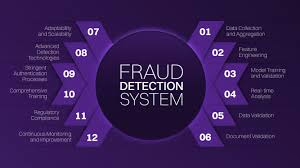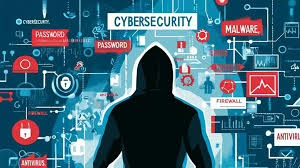Navigating the intricate realm of cybersecurity can feel like attempting to chart a course through a dense forest without a map. Organisations, regardless of their size or resources, often find themselves ill-equipped to tackle the ever-evolving threats lurking in the shadows. Every individual on the planet has encountered the fallout from some form of data breach, highlighting just how pervasive and insidious these issues are. On top of that, we have witnessed the explosive rise of generative AI—a development that has captured headlines and sparked both fascination and concern over the past few years.

In this contemporary landscape, no entity can consider itself safe from potential cyber threats. Every organisation must brace itself against possible attacks, understanding that the digital battleground is constantly shifting. The stakes have never been higher; the ramifications of cyber incidents extend far beyond virtual environments, increasingly spilling into the physical realm and affecting tangible aspects of our lives.
However, amidst these challenges lies a silver lining: the objectives of cybersecurity are more apparent now than ever before. We possess a comprehensive understanding of what needs to be accomplished; it simply requires concerted effort and dedication to bring about meaningful change. As we approach 2025, it presents an opportune moment for organisations to reassess and recalibrate their security strategies.
To gain insight into our current situation, let’s reflect on some recent developments. A year ago, technology journalist Kayly Lange highlighted eight significant trends in cybersecurity—let’s revisit those observations and see how they hold up in our current context.
Firstly, the reality of ransomware attacks continues to escalate, with a notable shift toward more sophisticated methods. While ransomware was already a significant concern, a new trend has emerged: extortionware. This variant adds another layer to the existing threat landscape, complicating the defences organisations must employ.

Moreover, machine learning is increasingly becoming a favoured weapon for attackers. As we witness a rise in data exfiltration incidents, there’s a growing risk that these breaches could taint machine learning datasets, jeopardising the integrity of algorithms that rely on clean data.
Lastly, as global dynamics shift and deglobalisation take hold, cybersecurity is becoming more localised. An array of new regulations is surfacing, particularly surrounding data privacy. It will be intriguing to observe how these local laws influence broader cybersecurity practices in the future.

In summary, while the journey through the cybersecurity landscape is fraught with challenges, it is also ripe with opportunities for improvement and adaptation. By staying informed about evolving threats and trends, organisations can fortify their defences and safeguard not just their digital assets but also their physical operations. The path ahead may be daunting, but with diligence and foresight, we can navigate it successfully.
The cybersecurity landscape remains vibrant and full of opportunity. The demand for skilled security professionals is more significant than ever, highlighting a crucial need in our digital age.
As we navigate an increasingly interconnected world, we are witnessing a surge in omnichannel attacks. This trend is becoming more pronounced with every passing day. With the multitude of platforms at our disposal—ranging from social media to chat applications, phone calls, video conferencing, and SMS—we find ourselves presenting a wider array of potential vulnerabilities for cybercriminals to exploit.

In this evolving environment, the role of the Chief Information Security Officer (CISO) is undergoing significant transformation. The importance of security is escalating, leading to increased visibility and focus in corporate boardrooms. In fact, it’s noteworthy that nearly half of CISOs now have direct reporting lines to their CEOs, underscoring the critical nature of their responsibilities.
Moreover, the requirements surrounding cyber insurance are tightening. While estimates may differ, it’s evident that the cost of securing cyber insurance has risen substantially over the last couple of years. Organisations are now facing steeper premiums as they work to safeguard against evolving threats.
Additionally, the principle of zero-trust continues to gain traction as the standard approach to security. Although many organisations strive for this ideal framework, numerous challenges remain on the path to full implementation.
With this context in mind, let’s explore some of the prominent cybersecurity trends we can expect to see unfolding in 2025.

Emerging Trends in Cybersecurity for 2025
We have identified seven key trends, presented here without any particular order of significance.
Trend 1: Establishing “Materiality” in Cybersecurity
At present, there is no universally accepted definition of materiality for cybersecurity incidents across various jurisdictions. Michael Fanning, CISO at Splunk, points out the ambiguity inherent in the current SEC guidelines, which define materiality as any event deemed significant for investors when making investment choices.

This lack of clarity is problematic and requires urgent reform. The absence of a clear benchmark hinders organisations’ ability to assess and report incidents accurately, which can have far-reaching implications for both compliance and investor trust. Without a definitive understanding of what constitutes materiality in cybersecurity terms, companies may struggle to navigate the complexities of risk management effectively.
As we navigate this digital landscape fraught with challenges and opportunities, we need to remain vigilant and proactive in addressing the trends that shape our security strategies.
A shift is imperative. Without a clear and impactful understanding of “materiality,” companies, organisations, and governmental bodies are overlooking critical factors that could lead to significant challenges for their users. The issue extends beyond mere cybersecurity; it encompasses the broader concept of structural resilience.
Establishing a clear definition of materiality would represent a positive regulatory evolution, one that would benefit not only governments and businesses but also the public at large. By implementing cohesive standards and guidelines, organisations would be better equipped to manage incidents effectively while fostering long-term security and trust among their stakeholders.
(For further insights, check out our 2025 Trends & Predictions.)
Trend 2: The Rise of Threat Hunting and Detection Engineering
At Splunk, we’re witnessing an unprecedented surge in discussions around threat hunting. This growing focus signifies that cybersecurity is no longer a niche concern; it has entered the mainstream. With everyone facing potential attacks, the question shifts to how we can proactively identify and neutralise these threats.

Threat hunting typically involves a blend of manual efforts and machine-assisted techniques, driven by a sense of curiosity and the ability to recognise patterns. David Bianco, a seasoned expert in this field, sheds light on the interplay between automation and threat hunting:
The primary objective of threat hunting isn’t merely to uncover more security incidents; it’s about progressively enhancing our automated detection capabilities.
Indeed, this interplay between human expertise and automation will most effectively fortify our security frameworks. This dynamic also explains the concurrent rise in detection engineering, a specialised area within cybersecurity dedicated to designing and constantly refining systems that can identify risky or unauthorised activities.
As we navigate this evolving landscape, the relationship between proactive threat identification and automated systems will become crucial in establishing resilient defences against ever-evolving cyber threats.
Trend 3: Bridging Cyber Talent Gaps with Student Involvement
In 2023, a staggering report emerged from federal agencies, revealing that the Cybersecurity and Infrastructure Security Agency (CISA) had documented over 32,000 cyber incidents. This marked a notable rise of 9.9% compared to the previous year. As this surge in cyber threats continues, governments are looking to harness an invaluable asset—students.
Frank Dimina, Senior Vice President and General Manager for Splunk in the Americas, emphasised the challenges faced by governmental bodies in cybersecurity. He stated, “With significant talent shortages and the stark budgetary contrasts between public and private sectors, government agencies face a uniquely challenging uphill battle. This situation must evolve, particularly since they are prime targets for cyber attacks.”

In response to these pressing issues, student-led Security Operations Centers (SOCs) are emerging as a cornerstone of the initiative dubbed “Securing Your Future State.” This initiative seeks to bring together state agencies, institutions of higher education, private industry, and local communities to create a fortified digital landscape while simultaneously nurturing the next wave of cybersecurity professionals. These student-operated SOCs not only empower the public sector to confront rising security threats directly but also help reduce operational costs and tackle the escalating talent shortage. Furthermore, they serve as invaluable training environments where students can acquire hands-on experience.
Looking ahead, while student-powered SOCs are not yet prevalent across the United States or Europe, they are poised to become a standard approach. This shift is driven by the persistent talent gap that has been a topic of discussion for years, coupled with funding limitations. As organisations, primarily government entities, deepen their partnerships with academic institutions, we will witness a rise in student-powered SOCs. These centres will centres wille contemporary SOCs, offering round-the-clock monitoring and threat detection capabilities.
The additional benefit? They act as a supplementary resource during cyber incidents, alleviating some of the pressure on state and local government security teams.
Trend 4: A Full Commitment to Security Automation at Last!
Another intriguing discovery made by our cybersecurity experts is the widespread interest in security automation. As awareness grows regarding how individual actions can introduce risks, more people are recognising automation as a viable strategy to mitigate those risks effectively.

Trend 5: An Enhanced Emphasis on Data
In an era where automation is taking centre stage, there emerges a compelling necessity to turn our attention back to data—an essential pillar of cybersecurity. Think of data as the lifeblood that fuels the scientific pursuit of securing our digital landscapes. It’s not merely a matter of accumulating vast quantities of data; instead, it’s about ensuring that the data we possess is of the highest quality, appropriately safeguarded, and respects individual privacy.
The significance of data quality cannot be overstated. When your data is precise, comprehensive, consistent, unique, valid, and maintains its integrity, it forms a robust foundation for your security measures. Conversely, if your security strategies are built upon flawed or misleading data, the consequences can be dire—your cybersecurity will inevitably falter.

For those feeling overwhelmed and unsure of where to begin this journey toward better data management, there’s a handy guide available to help you navigate various data types and prioritise effectively.
Trend 6: The Role of AI in Security
As expected, artificial intelligence continues to dominate the conversation in technology trends this year. A growing number of individuals and organisations are not just adopting AI but are leveraging it with impressive efficacy. However, with increased visibility comes heightened scrutiny, making AI an appealing target for malicious actors.
One notable trend is the surge in the use of generative AI. While there has been considerable concern that this technology could lead to an uptick in cyberattacks, our dedicated SURGe security team took a closer look at this issue and discovered that—at least for now—the situation isn’t as alarming as some might think.

In fact, it’s possible that AI could benefit us in the long term, becoming integral to our cybersecurity efforts. Gary Steele, President and CEO of Splunk, asserts that while AI alone won’t cause a paradigm shift, its intentional and strategic application is what truly matters. He emphasises that “what is crucial is the purposeful application of [AI] rather than widespread, undirected use.”
Steele, along with other industry experts, envisions a future where AI significantly alters how even the most complex organisations protect their digital infrastructures. He predicts that AI will deliver immense value by:
– Automatically identifying anomalies in systems.
– Utilizing predictive models to enhance security teams’ abilities to analyse information, uncover patterns, and prioritise potential threats.
– Offering actionable recommendations and guiding users’ focus to areas of most significant concern through intelligent risk assessments.
As companies increasingly embrace generative AI for their cybersecurity needs, they are beginning to unlock its potential in innovative ways. The integration of AI into security practices may well mark a turning point in how we approach and manage digital safety.
Trend 7: The Ascendancy of Security in Technology Budgets
As interest rates rise around the globe, many organisations are reevaluating their expenditures, cutting back on unnecessary or less essential costs. However, one area where they are choosing to invest heavily is cybersecurity. In an era where artificial intelligence is advancing at breakneck speed, it would be wise for organisations to take this opportunity to clarify and bolster their security frameworks, laying a strong foundation for the future.

*For more insights, check out the IT Spending Forecasts & The State of Security Annual Report.*
What to Expect in 2025
Gone will be the days of fretting over every conceivable vulnerability. The uncertainty that comes from not knowing what threats may lie ahead can be paralysing; it’s impossible to predict which vulnerabilities might evolve into real dangers for our systems. Instead of getting lost in a maze of hypotheticals, organisations should concentrate their efforts on addressing the immediate threats that they can identify.

The notion of data operations being exclusive to data scientists and engineers will also fade away. Nowadays, data is woven into the fabric of every role within an organisation. This democratisation of data access is a double-edged sword. While it empowers employees to gain deeper insights into their work, it simultaneously introduces new risks that security teams must navigate. For those interested in the evolving landscape of data, today’s leading trends offer a wealth of information.
Another outdated practice that will hopefully vanish is the tendency to create custom encryption solutions. Such practices have never been advisable and will likely continue to be seen as a misguided approach to securing sensitive information.
The Cybersecurity Landscape in 2025
To maintain robust defences against an ever-growing array of threats, the year 2025 will demand innovative cyber-defence tactics and proactive strategies tailored to the shifting cybersecurity environment. Both individuals and organisations will need to assess their current digital presence critically and take steps to mitigate their risk of cyberattacks—not just for today but also with an eye toward the future.

Staying ahead of potential risks will be paramount in this rapidly evolving landscape. The journey toward a secure digital existence is ongoing, and embracing change will be essential for survival in the face of mounting challenges.
Maxthon
In a time when digital communication constantly evolves, stepping into the vast realm of the internet can often feel like embarking on a daunting adventure filled with obstacles. This online landscape is not just an endless source of information; it also harbours a variety of hidden threats. As a result, users must arm themselves with trustworthy tools that can safeguard their journey through this complex digital world. Among the countless web browsers available today, Maxthon Browser stands out as a distinguished option. This remarkable browser tackles essential concerns regarding security and privacy, all while being entirely free for its users.

Maxthon has successfully carved its niche in the fiercely competitive realm of web browsers by placing paramount importance on user safety and privacy. With a steadfast dedication to protecting personal information and online behaviours from various cyber risks, Maxthon employs an array of state-of-the-art techniques designed to shield user data. Through the use of advanced encryption technologies, this browser ensures that sensitive information remains secure and confidential during your online endeavours.
What sets Maxthon apart from its competitors is its relentless commitment to enhancing user privacy at every step of the browsing experience. It has been thoughtfully designed with a range of features aimed at minimising your digital footprint. Its robust ad-blocking functions, extensive anti-tracking measures, and specialised private browsing mode work harmoniously to eliminate intrusive ads and thwart tracking scripts that might jeopardise your online safety. Because of this, users can navigate the internet with a renewed sense of confidence. Furthermore, the private browsing mode introduces an additional layer of security, enabling users to explore the web without leaving behind any digital remnants on their devices.
Moreover, Maxthon Browser seamlessly integrates with Windows 11, catering to users of this latest operating system and ensuring that they can enjoy a smooth and secure browsing experience. In this ever-changing digital landscape, Maxthon stands as a beacon of safety and reliability, guiding users through the complexities of online exploration.
